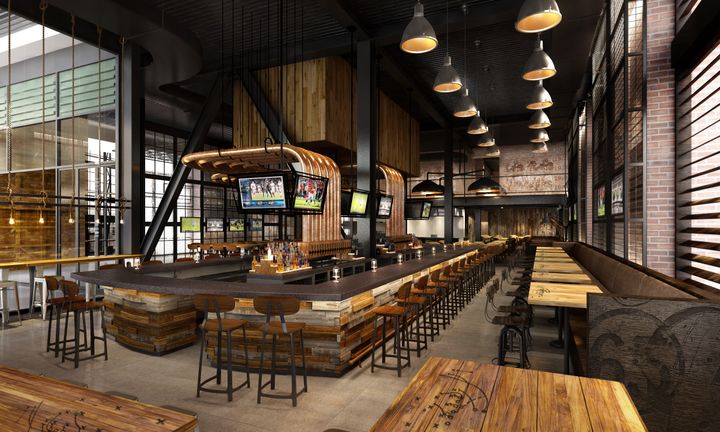
America’s two greatest universal obsessions in 2016 may be food and entrepreneurship. Sorry, shiplap. We binge on Chef’s Table, declare allegiances in Cupcake Wars and devour Shark Tank while it devours hungry entrepreneurs. We believe in The Profit and have an increasingly large appetite for honest serial entrepreneurs like Gary Vaynerchuk and David Chang.
Plenty of people, during at least one point in their life, would love to own or open a restaurant. It sounds glamorous. In truth, the restaurant industry is hard. Someone once told me to never invest in two things: boats and restaurants.
But there are plenty of people innovating, experimenting, making it work and inspiring people to want to make food their business. Here are handful, how they became successful and how they envision success going forward.
Johnny Brann Jr., Kitchen 67
Kitchen 67 is nationally recognized for having The #1 Sandwich To Try Before You Die and for being a Breakout Brand of The Year from The Nation’s Restaurant News.
Big picture thinking is where it starts, but the details are what will create success. We look to create an experience, to do that, everything that we do gets tested through the “D&B test.” Is it different & better than what people, our customers would expect?
The details are what people remember and we are in the business of creating experiences and memories. All demographics, millennials to baby boomers along with all cultures appreciate a unique experience. We must “self disrupt” or get left behind in this competitive business.
Having a layout and design that is very modern and innovative (many elements of technology such as and LED ceiling, phone charging stations on the tables, and tablets for entertainment) create different and better. The food and service are the focus, but all elements and details matter.
Another important piece is making it bigger than just your business or yourself. I have a strong community background and I’m honored to help to not only to promote my business but continue creating an entrepreneurial buzz in my community. I hopes to attract and inspire more entrepreneurs and talent to join us in Grand Rapids.
Sam Fox, Fox Restaurant Concepts.
Fox dropped out of college at 20 years old and used the rest of his tuition money to open his first restaurant. He now runs an empire of 50 restaurants, with 30 more in the pipeline scheduled to open over the next two years.
Every restaurant should tell a story, have a personality. It’s about creating a place, an experience, that reflects life. When you think of your guests and what is important to them in life, you are able to deliver an authentic sense of food culture and your restaurant becomes a piece of fabric in the community. When this happens, your guests will respond and you will have a successful restaurant.
Health and wellness is a major part of conversation and community today. Restaurants have responded by adhering to guests’ dietary needs, diet philosophies, and simply serving fresh food. Just like anything else, there is not one restaurant that can meet every dietary requirement and do it well. The key is to find one path to healthy dining and do it better than anyone else. For example, at True Food Kitchen, we base our menu after Dr. Weil’s anti-inflammatory diet. Everything we serve has anti-inflammatory properties, but also tastes really, really good.
The world we live in is so fast pace. There’s this need for a type of restaurant that can keep up with today’s guest but still provide an enjoyable experience. That’s why the fast casual segment is booming. It’s a setting where dates, meetings, families and friends all feel comfortable. I like to say a good fast casual restaurant is always the answer when wondering what to have for dinner.
To be successful in the restaurant business, you need to be great at both: running a restaurant and running a business. There are a lot of talented restaurant people who don’t understand the business side; and then there are a lot of wealthy business people who know nothing about running a restaurant and they both fail. A lot of people have experience and disciplines in one or the other, but mastering each simultaneously is when there’s success.
Doug Jacob, Toro Restaurant Group in New York.
Mistakes are made every day in the restaurant business. These are two examples that are easy to avoid: I would not advocate single-restaurant investing unless there is scalability in the opportunity, and I would not spend millions of dollars on aesthetic design that doesn’t have functional value.
What’s Next: There is a cultural movement being led by the Millennial generation for a push of authenticity from the brands, products, and services they consume. A restaurant needs to pay more attention to their design, product, brand and culture. If you do not have a purpose with your brand, you will not break through with the new generation and the next largest consumer segment.
Casual doesn’t mean you have to eat at McDonald’s anymore. At Toro NYC, we built the fine casual atmosphere so you can have an incredible meal of Barcelona-style tapas in a credible, comfortable environment.
Michael Heyne, VERTS Mediterranean Grill
Two days after graduating with their MBA degrees in 2011, Millennials Michael Heyne and Dominik Stein launched VERTS with the simple idea of recreating the popular food they missed from their native Europe and making it available for American consumers. Today, VERTS has over 30 fast-casual restaurants in Austin, Dallas, Houston and San Antonio, and plan on a major expansion to the East Coast this Fall.
The world has become a remote workplace, it’s about time the restaurant industry caught up with it. We have empowered our general managers and area managers to access everything they need through their laptops. Everything is digital right down to our inventory tracker. By eliminating office space, we can add more functionality to the kitchen and create a more spacious dining area for our guests.
Influencers are also important. Selecting appropriate influencers is a 3 step process; Identify, Audit, and Negotiation.
First the restaurants must identify influencers who might be a fit representing their brand. These influencers don’t need a huge following, just an engaged one.
Secondly, it’s important to audit each influencer selected. Examine the blogger’s past posts and eliminate anyone with red flags such as influencers who have endorsed competitors or spoke poorly about your small business. Also, ensure the blogger creatively aligns with your brand.
Lastly, reach out to the influencer with an offer to join your influencer program. Some influencers will require payment while other will promote in exchange of your company’s goods or services. This will vary depending on the influencer’s following and reach.
Laurel Cadena, CheddrSuite
Laurel Cadena has been in the restaurant industry over 20 years and recently created a company with 4 other restaurant owners that do consulting to develop a management tool. The tool was developed for all restaurant owners that experience the same pain points and harnesses technology that has been slow to emerge in the second largest employment industry behind the government.
A good cook or interior designer will not necessarily mean a successful restaurant. There are business principals that need to be mastered to achieve success in this somewhat unforgiving service industry. The profit margins are thin like prosciutto so you need to be very delicate with how you manage your operation. From personal to inventory.
Technology has been disconnected and clunky but is making progress. Gone are the days of $30,000 POS systems that are disparate from scheduling, financial tools, lack communication or have an expensive inventory add on. Now you can get a tablet and a cash drawer from Staples and avoid the huge start up expense along with annual costly software and hardware updates.
All the things you need to run a successful operation with no start-up expense and costs as low as $49.99 a month. Technology is allowing restaurateurs to spend more time doing what they love cooking, talking to customers and run a tightly connected staff and does not come with a large financial price tag.
